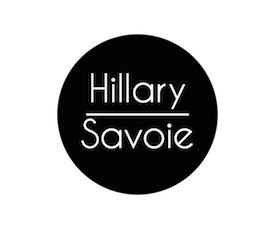This week is Feeding Tube Awareness week. I have spoken here quite a bit about Esmé’s feeding tube. As my post from last year’s Feeding Tube Awareness Week explained, Esmé has never had an uncomplicated relationship with food. At first she did not eat enough to grow–and she threw up much of what she did eat.
Then, when she was 3 1/2 months old Esmé developed double aspiration pneumonia. This lead to cardiac and respiratory arrest (you can read that story here). She was revived and recovered very well, but it was clear that she could not safely continue to eat by mouth. At this point we had a G-tube placed surgically, and she has been tube-fed ever since.
It is almost embarrassing for me to say, given how much I now love Esmé’s tube, but I was very resistant to tube-feeding at first. I worried that the tube would highlight all the ways she was different, that it would isolate her. I was still defensive about having failed to breast-feed her (as I had planned). I didn’t want to fail to bottle feed my baby too. Feeding your child is such a deeply fundamental emotional part of caring for her. And, at the time, I felt that medicalizing the way that a fed Esmé would create some kind of further distance between us.
What I didn’t understand at the time was that deciding to tube feed Esmé wasn’t a parenting failure. It was a triumph. Tube feeding Esmé gave her a chance at life. I can now honestly say that tube feeding brought us closer together–because it gave her life and because it helped me learn how to advocate for my child. It taught me that, as her mother, I would always figure out how to lovingly and safely care for her.
But I wish I didn’t have to learn it the hard way. I wish I could say that I was accepting and proud of the tube right away.
Like many people I didn’t really understand that feeding tubes existed in any kind of detail–until I was faced with the prospect of Esmé having one. I remembered vaguely that a little boy that I knew had health challenges in my early grade school years wore a daily bandage on his stomach–I remember seeing the large piece of gauze stretched across his entire belly when his shirt lifted one day. No one ever talked to us about why that was. He and I were friends in the way little kids can be–he chased me and tried to kiss me on the playground, I pretended to be upset. I know I asked him that day about his stomach. I wasn’t afraid, I was curious–and probably concerned to not ask the wrong thing. He tried to explain something to me about how he ate, lifting up his shirt so I could see more. But he was herded away by some well-intentioned adult before I was able to understand.
I was afraid then, certain that I had done something wrong to ask…and I never asked again.
I have thought about that moment hundreds of times since Esmé’s tube was placed. It makes perfect sense now–that he had to cover his entire belly at school, that no one was to talk about it. I have thought about how, if he had been allowed to explain, to show the miracle that helped keep him able to chase me and torment me with kisses, that I might have understood sooner that this same device could help my daughter have a fuller life. I might have agonized less.
Sadly, this seems to be the norm with what we are told to do with feeding tubes–keep them secret.
It seems that even the rare representation of feeding tubes on medical dramas underscores the misconception that tube-feeding should be hidden–that it is akin with not having a life, rather than with vibrant and active life of all varieties. I am still constantly shocked there is a lack of experience with tubes even among medical personnel (unless they are dealing with feeding tubes in a hands-on way on a daily basis). As a result, many families are sent home with their children with new feeding tubes without adequate training and support, left to make it up as they go. (I suppose much of parenting is like this, but when you tube-feed it is not as if there is a line of helpful friends, family, and neighbors ready to offer advice based on experience.)
We were given very little training on how to use the tube. We were given a feeding schedule to follow that included far too many calories for Esmé to handle, and that gave little thought to the rhythms of home life (like, I don’t know, sleep!)–and we were given no instruction about how to change that schedule if it wasn’t working for Esmé or us. The visiting nurse that came to help us a few times at home told us not to vent Esmé’s feeding tube when she retched, because “she’d never learn not to do that”–which was awful, harmful, and painful advice. The nurse in our original pediatrician’s office tried to give Esmé an oral vaccine by mouth a few weeks after her feeding tube was placed. Even though Ez wasn’t allowed to have anything by mouth the nurse got mad at me for stopping her–and then was unable to administer the vaccine by tube, so, I had to do it. We left this practice soon after, but she was not the last nurse (or doctor) I’ve interacted with who clearly had no idea how to use the tube.
Thankfully we were told by a young resident in passing that there was some kind of an online group for parents of kids with feeding tubes. I found Feeding Tube Awareness on Facebook soon after. It was still a budding community then–not the 28,000 strong Facebook page it is today. And it was there that I received much of the helpful information we needed for day to day life with Esmé’s tube–directly from people who use feeding tubes every single day. And before I knew it, I was offering help to other parents–and encouraging the nurses and doctors we interact with to understand how feeding tubes are handled at home.
I joined the Feeding Tube Awareness Foundation staff over two years ago now. I am so proud of the work that we do helping parents of children who are tube fed share their knowledge with each other and with medical professionals. We help to establish a positive image of feeding tubes, to spread knowledge about life with feeding tubes, and to support families to help feel empowered to care and advocate for their children who are tube-fed.
I feel confident that, as a direct result of that work, if I were a little girl on the playground today being chased by an adorable little boy with a feeding tube, my question about his tummy would more likely be met with an open dialogue about the miracle that is tube feeding–that he would have been able to proudly display the little device that kept him thriving.
And then, we’d have gone back to playing.


Nice! I love our tubie! It has given him life too. 🙂 find our story at xlinked1.com
We had anxiety about our tube too, but now we love it. We also believe it saved our daughter's life.